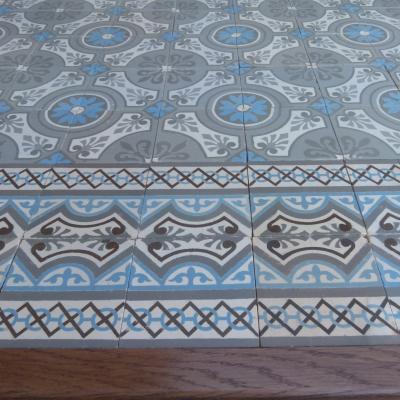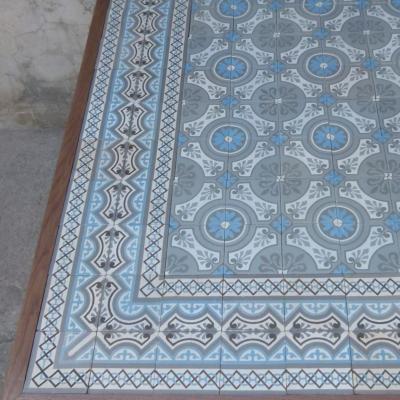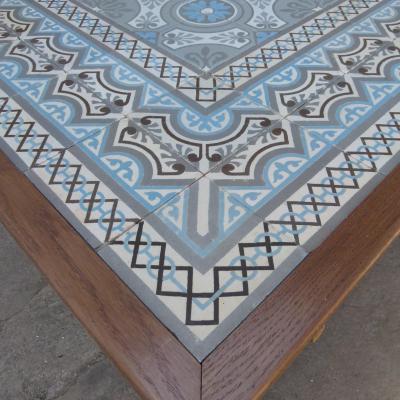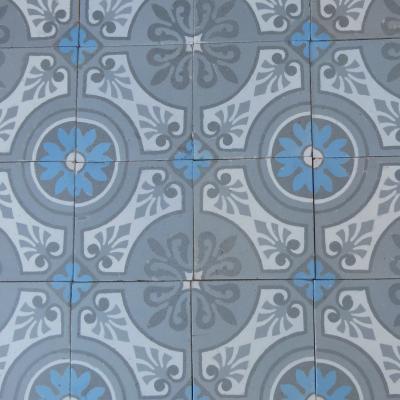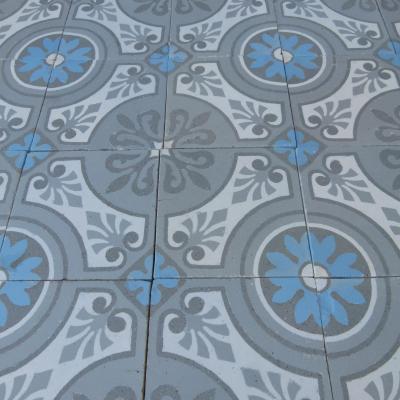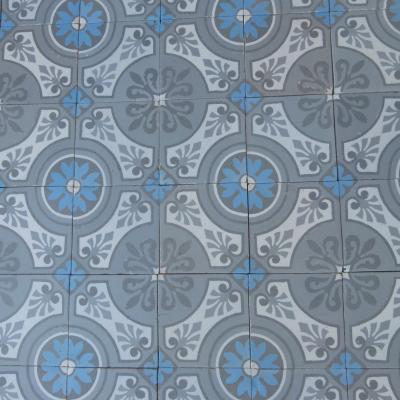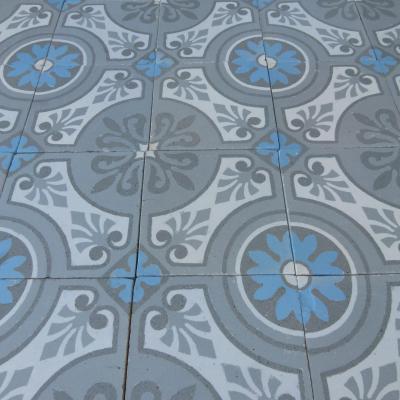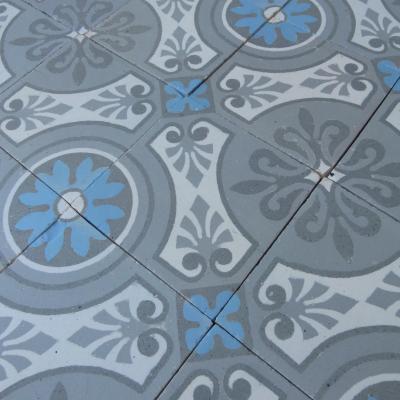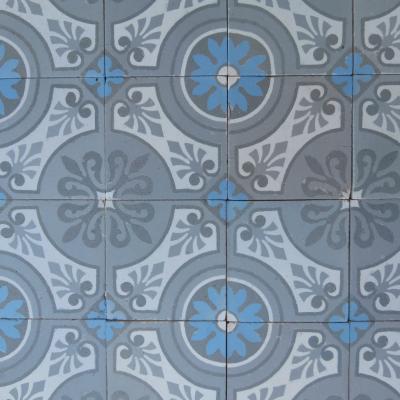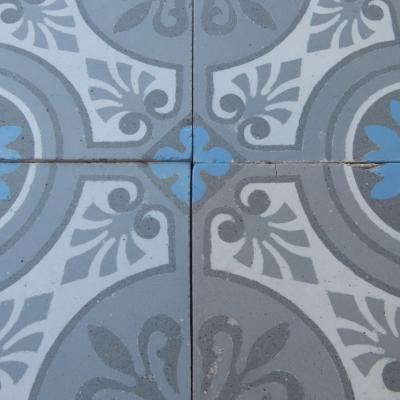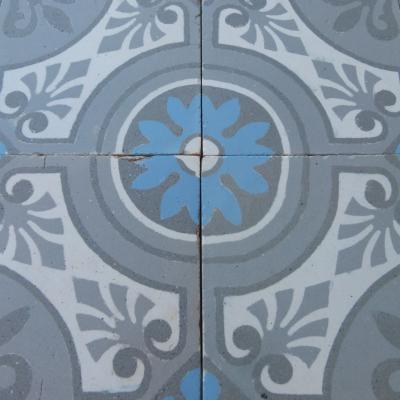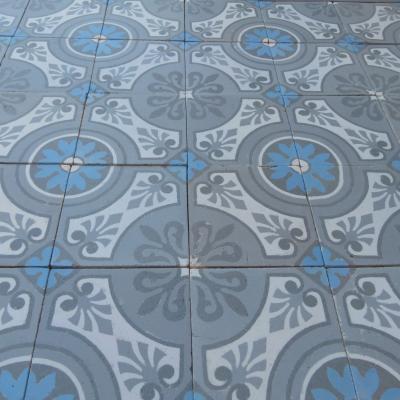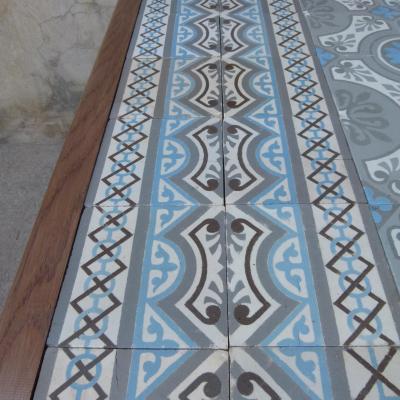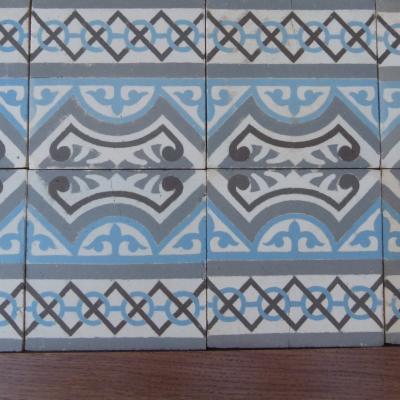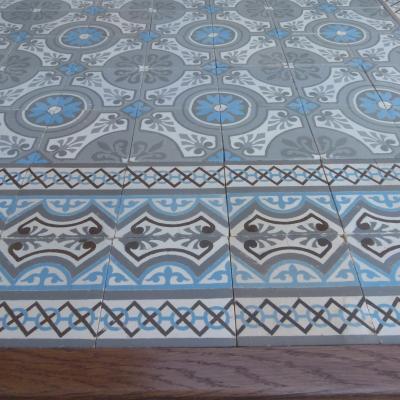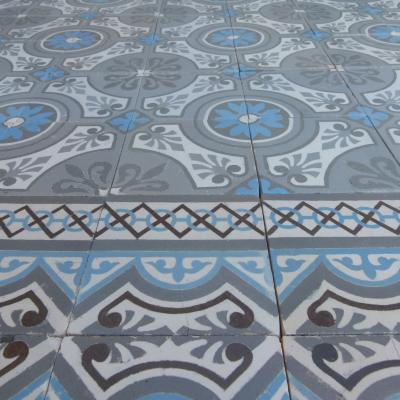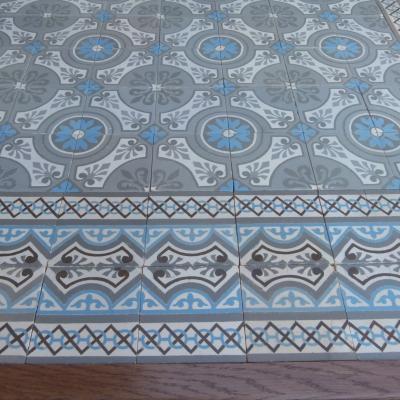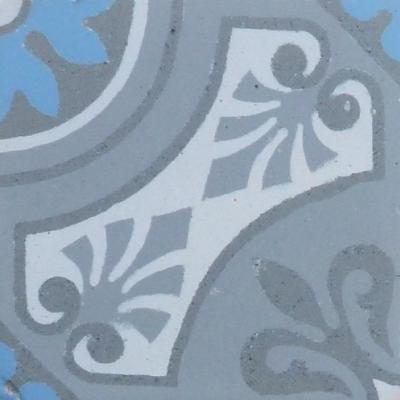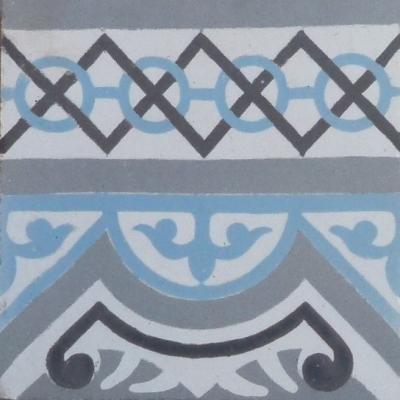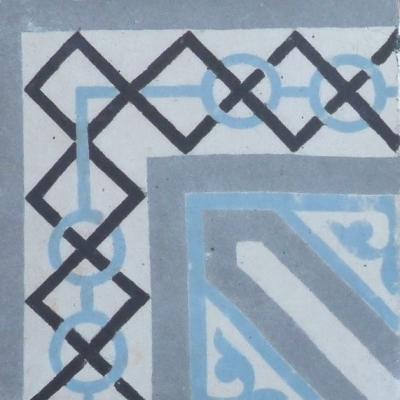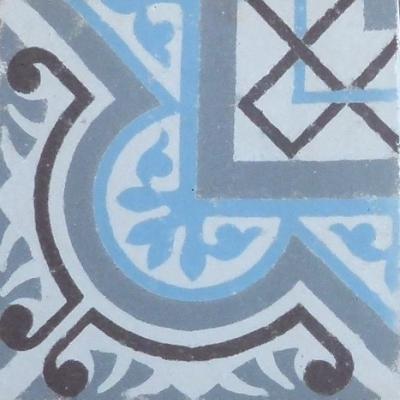9.5m2 St. Remy, Chimay ceramic floor, early 20th century
A reclaimed, fully restored and now ready to re-lay antique Belgian ceramic totalling 9.5m2 / 102 sq ft. in surface area.
The floor consists of a 15cm sq field tile, opening up its linked motifs across a four tile tessellation, framed by a same size 15cm border which is laid back-to-back, in duplicate. The palette is cool in greys, blues, charcoal and off-white.
Manufactured c.1905-1910 by Societe Anonyme des Produits Ceramiques St. Remy, CHIMAY, Belgique we include scans from their period catalogue in the photo gallery along with photographs of a randomly selected 1m2 section of the floor. We have reclaimed three of each of the internal and external border corner tiles, requiring the simple task of the tiler mitre cutting the other two from the regular borders.
These ceramics are in good condition, as can be seen in the high resolution photographs, with a small number bearing edge nibbles or small groutable chips. The floor can be laid inside or outside of the home and being a highly fired tile with virtually zero surface porosity can also be laid with underfloor heating systems.
Tile quantities, give or take one or two:-
FIELD – 300 tiles – 6.75m2 / 72.7 sq ft
LARGE BORDERS - 115 tiles plus 3 internal and 3 external corners – 2.73m2 / 29.3 sq ft. – 9.1 linear metres / 29.9 linear ft*
* double the linear meterage for a single border.
NOTE
Antique tiles were most commonly made in single or two tile moulds. Before current computer automation methods their moulds were made by hand and the colour slips mixed by eye. Kiln temperatures could also be variable, as could the firing time. The result is that often tiles display subtle size and thickness variations and there can be tonal variations in colours, owing to the slip mixing and/or firing time. All of this makes these handmade tiles unique and adds to their charm. Some floors display their subtle variations in size and tones, some not, but when photographing we always take a random section of the floor so that it is representative of the whole. A tiler should always dry lay a section of the tiles to familiarise himself with them before starting to fix lay.
CE310



